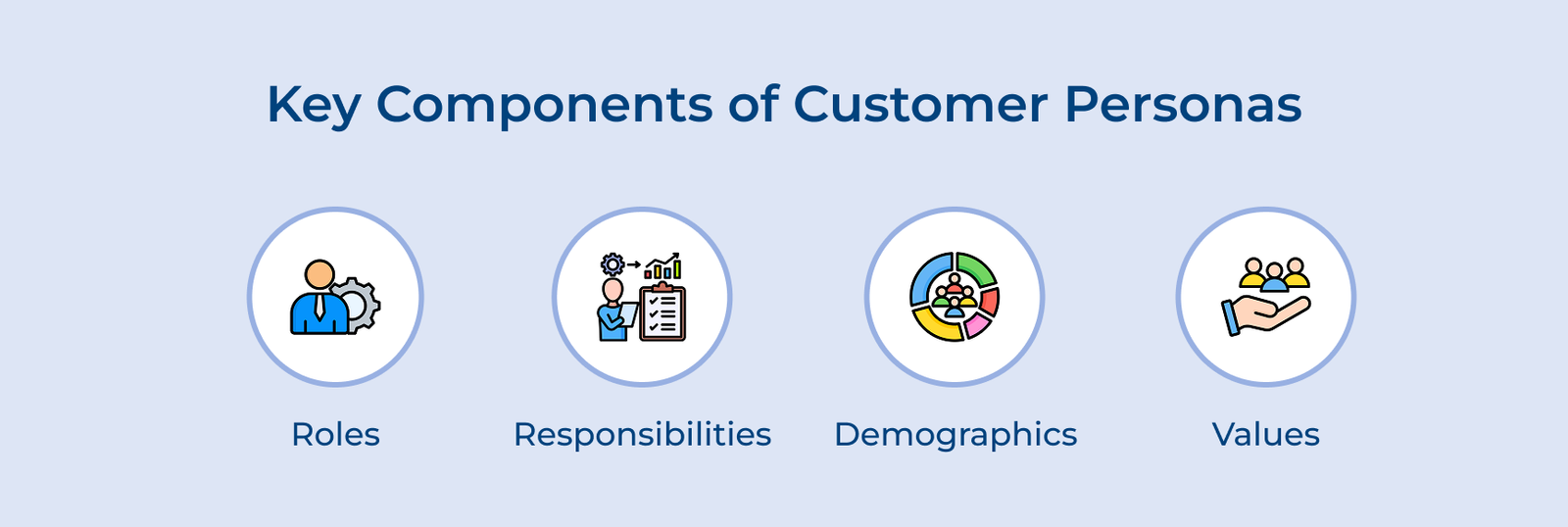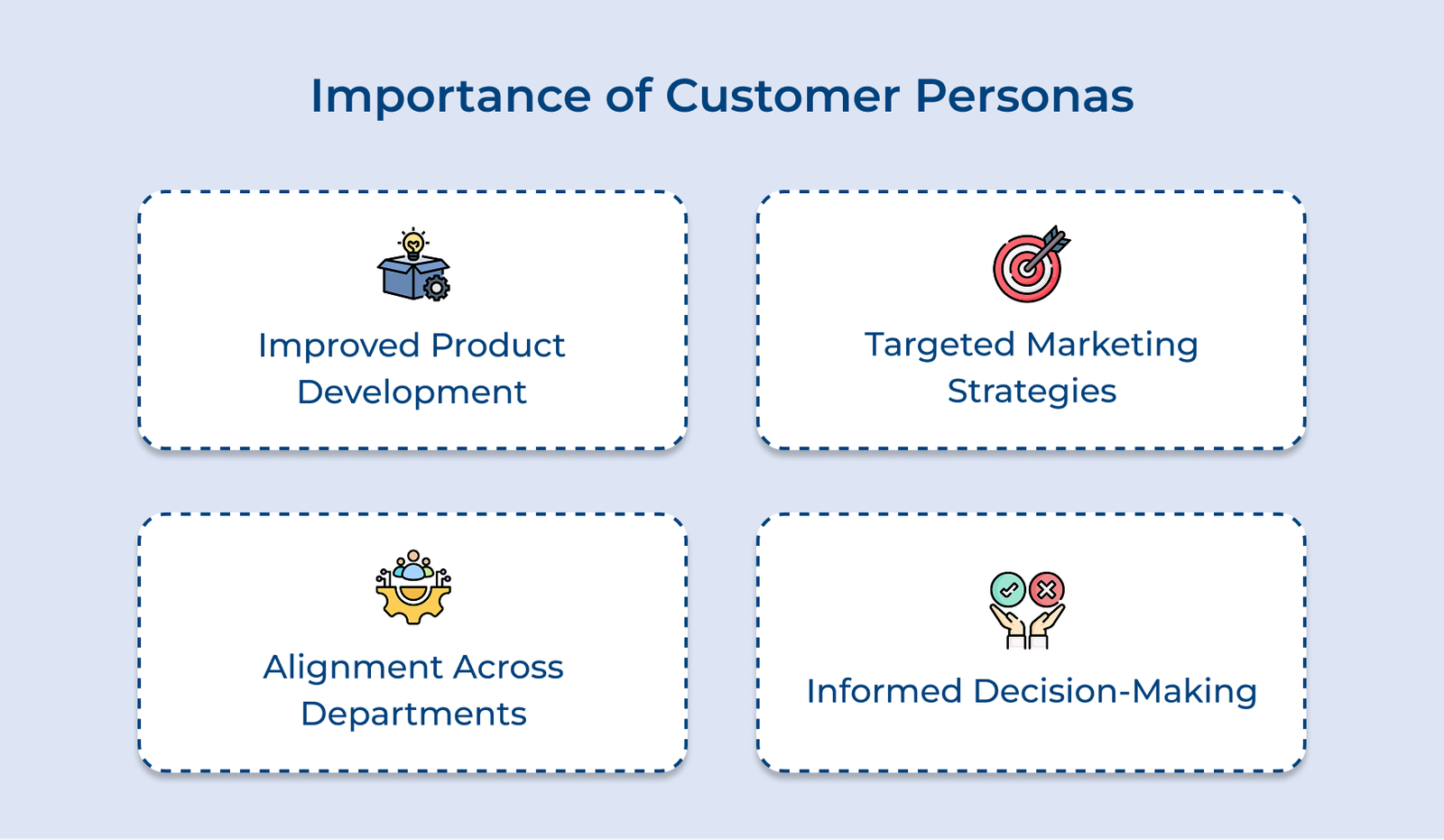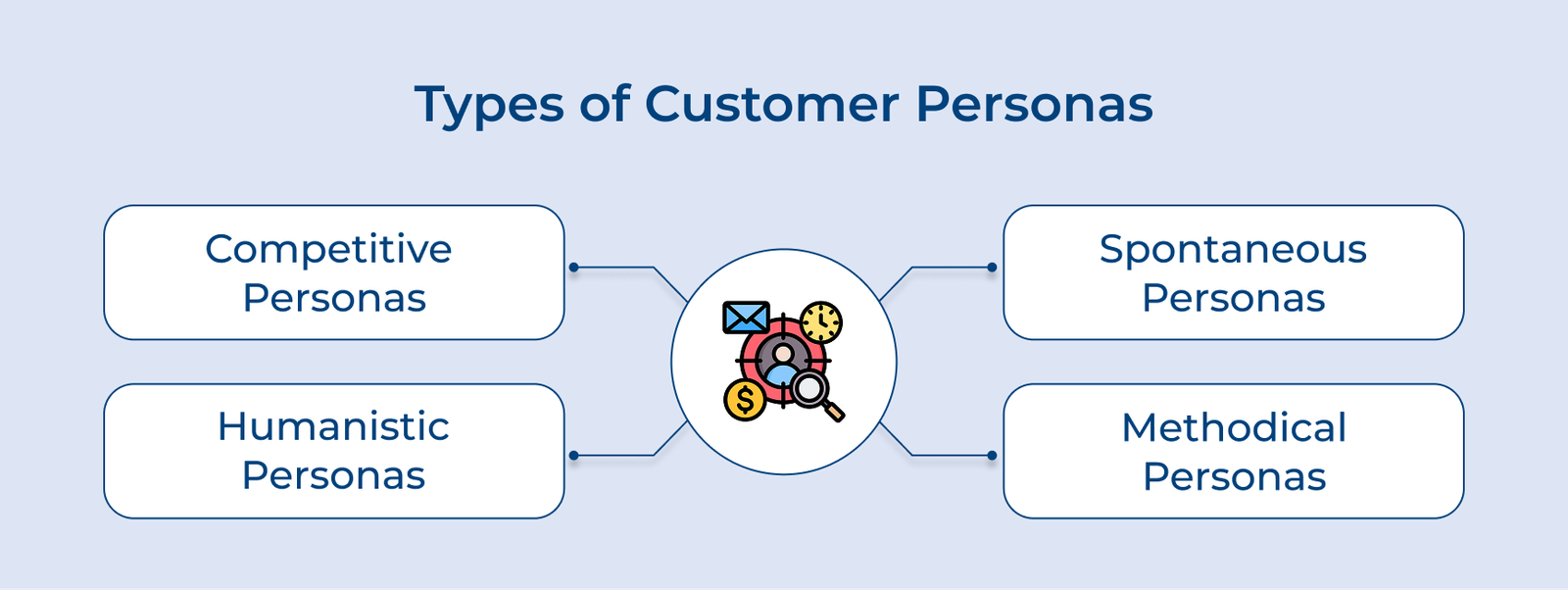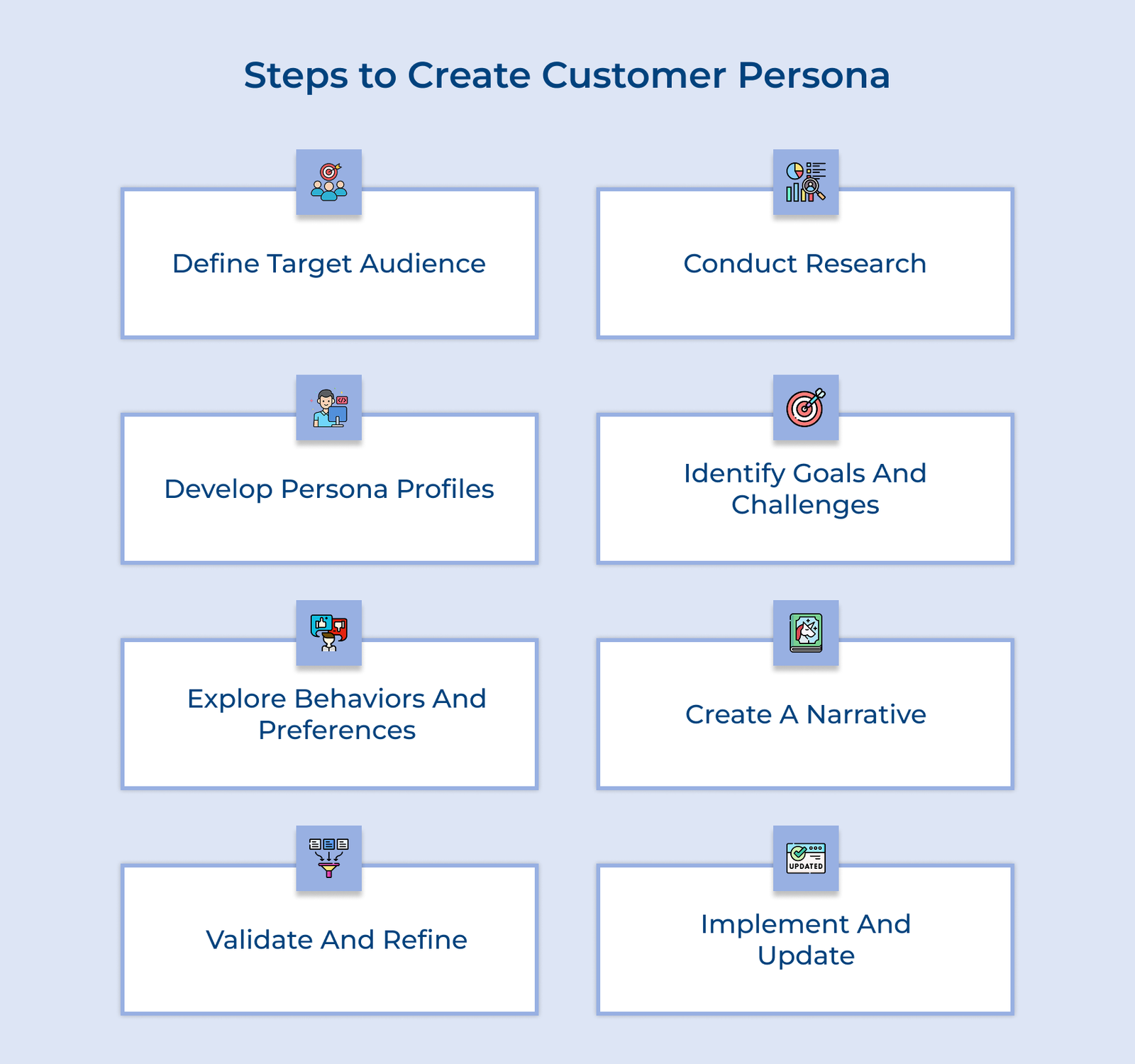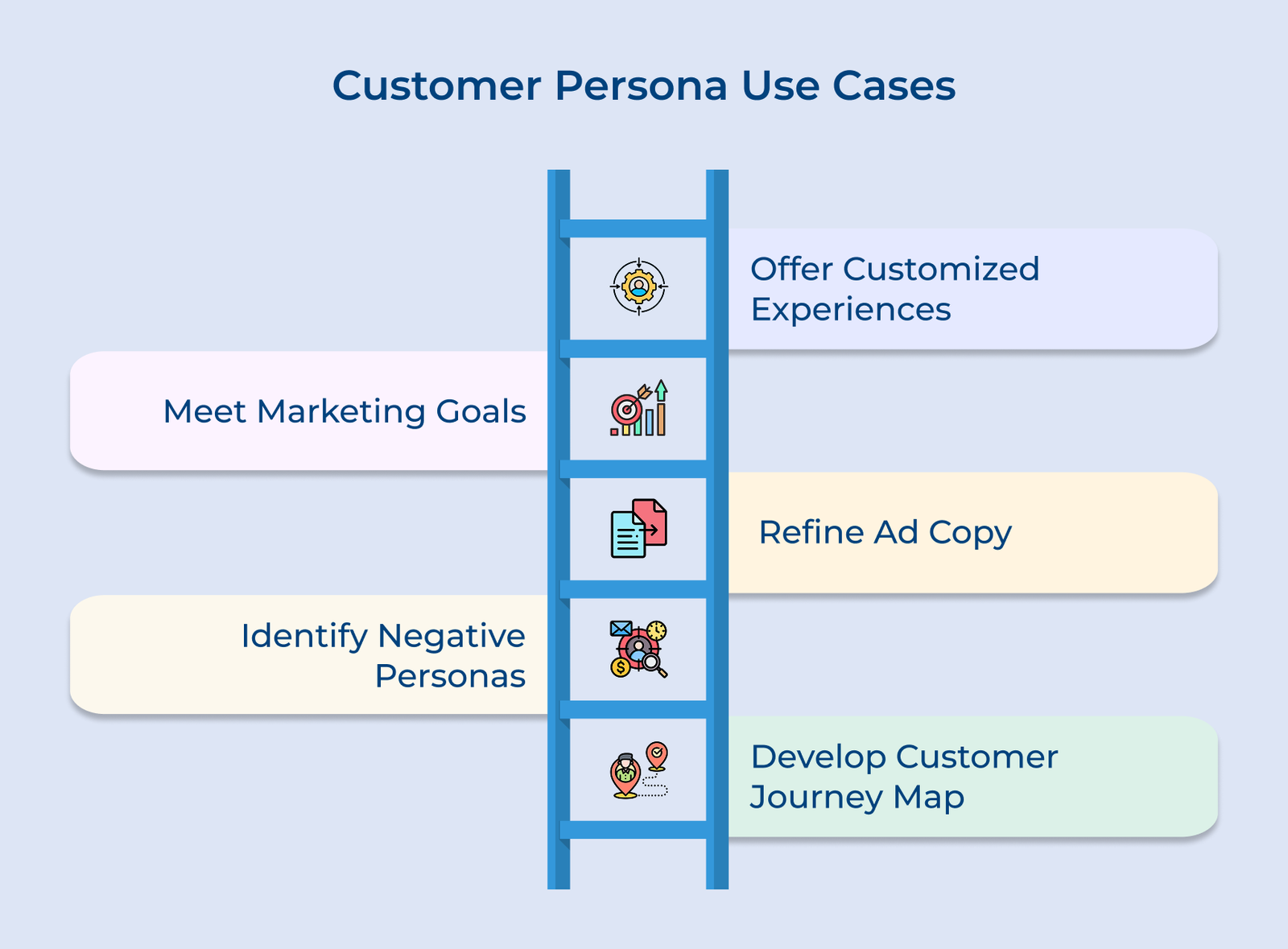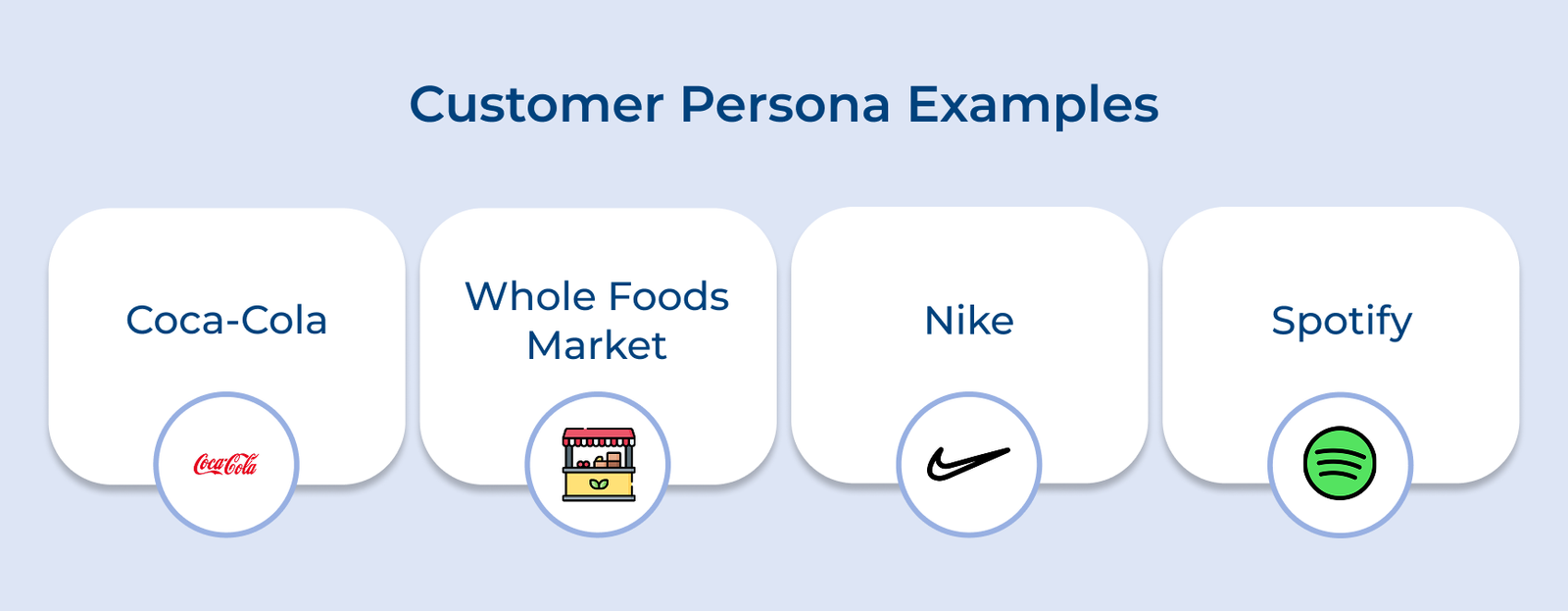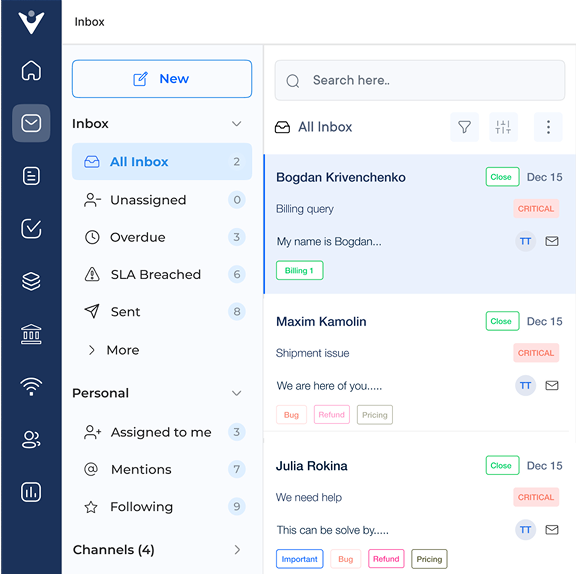1. Define the Target Audience
Defining the target audience is a crucial first step in creating an effective customer persona.
It involves identifying the specific market segment or customer group that the product or service is designed for. The identification can be based on factors such as industry, company size, job roles, or any other relevant criteria that align with the offering.
Once the target market is identified, it’s essential to segment the audience based on demographics, psychographics and behaviors. Demographic factors include age, gender, location, income level and education. Psychographics encompass personality traits, values, interests and lifestyle preferences. Behavioral segmentation considers buying habits, usage patterns and decision-making processes.
Pro tips:
- Leverage existing customer data: Analyze the current customer base, website analytics and sales data to identify patterns among the audience.
- Conduct surveys and interviews: Gather firsthand information from current customers through surveys, focus groups and in-depth interviews. It helps to understand their motivations, pain points, or preferences.
2. Conduct Research
Crafting an effective customer persona requires a deep understanding of the target audience. Gather data from various sources, including surveys, interviews, website analytics and social media interactions. Analyze customer feedback, reviews and online conversations to uncover valuable insights into their preferences.
Pay close attention to the challenges and motivations that drive the customers’ decisions. Identify their goals, frustrations and the factors that influence their purchasing behavior. The information will help to create a comprehensive profile of the ideal customer, enabling the team to tailor the products, services and marketing strategies to meet their specific needs.
Actionable tips:
- Leverage multiple data sources to gain a well-rounded perspective, combining qualitative and quantitative data.
- Involve cross-functional teams, such as marketing, sales and product development, to ensure a comprehensive understanding of the target audience.
3. Develop Persona Profiles
When businesses have started the process of building customer personas, it’s essential to bring them to life by giving them a name and a face. The humanizes the persona and makes it easier for the team to relate to understand the target customer. Let’s assume that you might create a persona named “Marketing Manager Molly.”
Define the demographics of the persona, including age, gender, location, income and other relevant factors. The information helps you better understand their needs, preferences and behaviors. Let’s consider, “Marketing Manager Molly is a 35-year-old female living in a metropolitan area, earning an annual salary of $75,000.”
Best practices:
- Conduct thorough research using customer surveys, interviews and analytics data to gather accurate information for the profiles.
- Use visuals, such as stock photos or illustrations, to give the personas a face and make them more relatable to the team.
- Regularly update the persona profiles as the target audience evolves and new data becomes available.
4. Identify Goals and Challenges
When creating a customer persona, it’s crucial to identify their goals, aspirations and desired outcomes. Understanding what motivates the target audience helps to align the product or service with their needs and desires. Equally important is determining the pain points, frustrations and obstacles the persona faces in achieving their goals. Businesses can position the offering as a solution to their problems by identifying the challenges.
Let’s assume “Marketing Manager Molly struggles with limited budget, difficulty measuring campaign effectiveness and staying up-to-date with the latest marketing trends.”
How to implement:
- Conduct in-depth interviews with existing customers or prospects to gain deeper insights into their motivations and pain points.
- Create empathy maps to visualize the persona’s goals, challenges, thoughts and feelings. It helps the team develop a more comprehensive understanding of the target customer.
5. Explore Behaviors and Preferences
Exploring the behaviors and preferences of customers is essential for tailoring marketing strategies. Analyze the persona’s buying habits and decision-making processes to understand how they purchase products or services in the industry.
Understanding the persona’s values, interests and lifestyle choices helps to create more resonance. Identify what matters most to them, both professionally and personally, to build stronger connections.
Pro tips:
- Use web analytics and customer data to analyze buying patterns.
- Monitor social media to understand the persona’s values, interests and lifestyle choices.
6. Create a Narrative
Creating a narrative is a crucial step in developing a comprehensive customer persona.
Start by developing a detailed backstory for each persona, including their age, occupation, family life and hobbies. The backstory should provide a clear picture of who they are and what their daily life looks like.
Describe the persona’s motivations, attitudes and personality traits. What drives them? What are their goals and aspirations? How do they approach challenges and make decisions? Understanding the aspects of their character will help to create a more realistic and relatable persona. Incorporate quotes or anecdotes that showcase their thoughts, feelings and experiences. It can be fictional but should be based on real customer insights and data.
Key benefits:
- Enhanced empathy: Developing a deep understanding of the person’s life and experiences can help better empathize with their needs.
- Improved communication: A well-crafted narrative helps teams across the organization understand and relate to the persona. It ensures consistent communication and decision-making.
- More effective strategies: Businesses can create targeted strategies that resonate with their needs and preferences with a clear picture of the persona’s motivations.
7. Validate and Refine
Validating and refining the customer personas is an essential step in ensuring their accuracy. Once the initial drafts of the personas are created, share them with relevant stakeholders across the organization, such as marketing, sales, product development and customer service teams. Seek their feedback and insights, as they may have valuable information or perspectives that can help improve the personas.
If you find gaps in your understanding or receive feedback that requires further exploration, conduct additional research. As you collect more insights, refine your personas accordingly. It is an iterative process and your personas should evolve as you learn more about the customers. Be open to making changes and adjustments as needed to ensure the personas remain accurate.
Importance of it:
- Increased accuracy: Gathering feedback and conducting additional research can ensure that the personas are based on real customer data, rather than assumptions or guesses.
- Improved alignment: Sharing personas with stakeholders and incorporating their feedback. It helps ensure that everyone in the organization has a shared understanding of the target customers.
- Better decision-making: Validated personas can help make more informed decisions about product development, marketing strategies, and customer service approaches
8. Implement and Update
Once you have refined your personas, it’s time to integrate them into the marketing, product development and customer experience strategies. Use them to guide decision-making and ensure that all efforts are aligned with the target customers’ needs. Customer needs can evolve, so regularly review and update the personas to keep them relevant.
Encourage teams across the organization to use the personas in their daily work. Product developers can use the personas to guide feature prioritization and design decisions. Marketers can use the personas to create targeted campaigns and messaging. Making the personas a central part of the decision-making process can help ensure that the entire organization is customer-centric.
Key benefits:
- Improved customer-centricity: Integrating personas into the strategies can help ensure that the efforts are always aligned with the customer’s needs and preferences.
- Increased agility: Regularly updating the personas helps to stay responsive to changing customer behaviors, allowing businesses to adapt their strategies quickly
Customer Persona Use Cases in Improving Buyer Experience
Discover how leveraging customer personas can significantly enhance the buyer experience.






